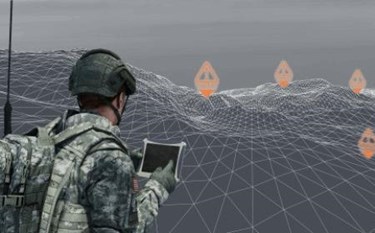Keeping Warfighters "In The Know"
By Ed Biller

Note: This column serves as the intro to the seventh edition of Electronic Military & Defense, which can be accessed here.
Knowledge is power, as the saying goes. The days of shock-and-awe warfare have given way to a more subtle, quick-and-precise strike mentality enabled by almost unimaginable amounts of battlefield data. Reconnaissance balloons have become unmanned aerial vehicles (UAVs), advanced aiming optics are preferred to iron gun sights, and “bigger” no longer is equated with “better,” but more often is associated with “power hungry” or “cumbersome.”
In this, the seventh edition of Electronic Military & Defense, we examine some of the technologies that contribute to improved battlefield awareness — the flow of data that informs both split-second decisions in the field and logistics coordinated from afar. Some of these technologies contribute to awareness by improving upon their predecessors’ mobility or precision, others by applying existing technologies to new applications.
Some of these technologies look from the ground skyward. Researchers from the U.S. Naval Research Laboratory examine how optical interferometry could provide high-resolution images for surveillance and condition assessment of geostationary satellites (p. 8). Authors from Alta Devices look at how small, unobtrusive, and efficient gallium arsenide (GaAs) thin-film solar technology could provide power generation solutions to everything from UAVs to soldier-carried electronic accessories (p. 28).
For other technologies, it’s all about unearthing previously unknown data by letting computers do a little more of the work. Researchers from the University of Waterloo look at how machine learning-integrated mm-Wave radars can be used to detect reactive gases (p. 34), and Pleora Technologies’ Marc-Andre Casavant explores how machine vision helps provide military vehicles with local situational awareness (p. 25).
Other contributors in this year’s edition of EM&D look at how we can take care of the systems that take care of us. Hiro Maehara of Keysight Technologies writes on how to improve accuracy and throughput in transmit/receive module testing (p. 22). Also, Saint-Gobain Crystals’ Drew Haven breaks down the pros and cons of different materials for use in protective windows and transparent armor (p. 12), and dB Control’s Jose Gonzales discusses how to improve microwave power modules, with an eye toward MPMs that operate at higher frequencies, such as Ka-band (26.5 to 40 GHz) and V-band (50 to 75 GHz) (p. 20).
Finally, Strategy Analytics’ Asif Anwar looks at how mission-critical radar and communications tasks can operate safely and efficiently across an increasingly crowded radio spectrum (p. 16).
For warfighters, sensing the world around them, rapidly processing all of the available information, and making informed decisions based on clear interpretation of that information can be the difference between victory and defeat. It is the duty of those creating the warrior’s tools to craft something that helps soldiers defeat their enemy — and survive the fight — by crafting with innovation and enthusiasm, and we hope the resources presented here can help readers toward that ultimate goal.
As Gen. Douglas MacArthur is credited with saying, “The best luck of all is the luck you make for yourself.”
Thank you for reading.
